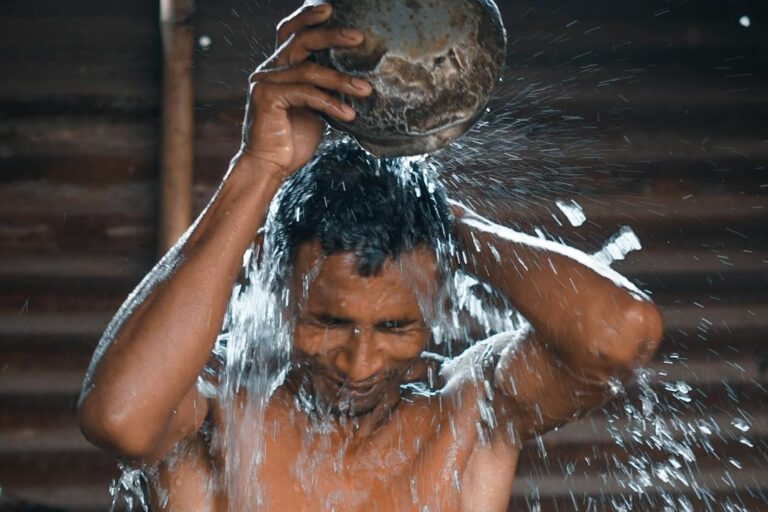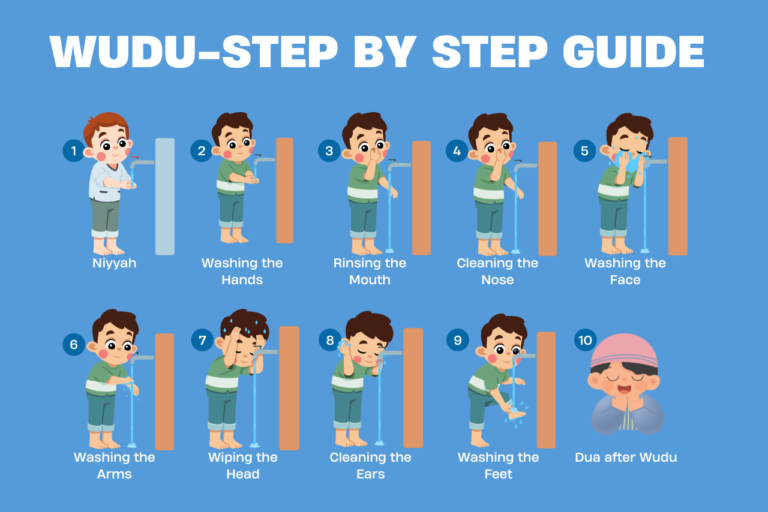How to Do Tayammum and When It’s Necessary
Tayammum or dry ablution is a significant practice in Islam that demonstrates the religion’s practicality and flexibility when it comes to acts of worship. Derived from the Arabic root word Tayammum meaning “to aim” or “to intend,”. It is a purification method using clean earth when water is not available. It is an alternative to wudu (ablution) and ghusl (ritual bath), enabling Muslims to maintain their spiritual cleanliness and connection to Allah even in difficult circumstances. Knowing what is tayammum and how to do Tayammum ensures that Muslims can fulfill their religious obligations under all conditions. Allah says in the Quran:
“If you do not find water, then perform Tayammum using clean earth and wipe your faces and hands with it” (Al-Ma’idah: 6)
This blog post discusses, how to perform Tayammum and what the conditions are making it permissible to execute it.
Excuses and Conditions for Tayammum
Tayammum is permissible for someone unable to use water, and there are two main scenarios where this may occur. Firstly, when water is unavailable and secondly, when using water may cause harm, such as in cases of illness.
- Absence of WaterIf a person is in a place where water is not available, such as being outside a city with no water within a one-mile radius, or there is a well, but there is no means to extract water from it. Similarly, if there is a wild animal near the water source or an enemy has control over the water, making it unsafe to access, it is considered as if the person has no water. In such cases, the individual can perform Tayammum in place of wudu or ghusl and pray.
- Illness or Inability to Use Water: If water is available but the person is ill, and using water for wudu or ghusl may endanger their life, harm a body part, worsen the illness, or prolong recovery, then they are allowed to perform Tayammum. Also, if the person is physically unable to perform wudu or ghusl and there is no one to assist them, they can perform Tayammum.
By understanding these conditions, one can appreciate the mercy and wisdom behind the revelation of Tayammum in Islam, making it easier to comprehend how to do Tayammum.
Step-by-Step Guide: How to Do Tayammum
Performing Tayammum is simple, yet many may wonder exactly how to make Tayammum. Below are mentioned the steps of Tayammum one by one:
- Make the Intention (Niyyah): As with all acts of worship, the first step is to make the intention in your heart that you are performing Tayammum for purification.
- Strike the Earth: Strike both hands on clean earth, sand, or any natural material like a rock or dust, and lightly blow off/ shake off any excess dust.
- Wipe the Face: Wipe your entire face with your hands once, ensuring that no part of the face is left untouched.
- Wipe the Hands: Strike both hands on the ground again, and wipe both hands, including the forearms and the elbows, making sure to cover every part. Interlace the fingers to ensure the gaps are also cleaned.
Tayammum has two obligatory acts. Without fulfilling these two obligations, Tayammum is not valid. The first one is to strike the clean earth once and wipe the entire face and the second one is to strike the clean earth again and wipe both arms, including the elbows.

These tayammum steps answer the question of how to do Tayammum and allow you to purify yourself when water is unavailable, ensuring you can still perform acts of worship like Salah (prayer).
Wajib of Tayammum
- Intention (niyyah) must be made.
- The wiping of the hands should be complete and cover all required areas.
- Use at least three or more fingers while wiping.
- Tayammum must be performed using clean earth or something related to it (e.g., dust, stone).
- The object used for Tayammum must be clean.
- Absence of water or the inability to use water due to a legitimate excuse.
Sunnahs of Tayammum
- Begin by saying Bismillah (In the name of Allah).
- Strike the earth with the palms of the hands.
- After placing the hands on the earth, pull them forward.
- Then place the hands again and draw them back over the earth.
- Shake off the hands after striking the earth.
- Spread the fingers apart when striking the earth.
- Perform the steps of Tayammum in order.
- Perform Tayammum consecutively, without unnecessary gaps between the steps.
Learning the Sunnahs will help ensure that one knows how to do Tayammum properly and fulfills all the requirements of this alternative purification method.
Nullifiers of Tayammum
- Anything that breaks wudu will also invalidate Tayammum.
- Gaining access to water or the ability to use it nullifies Tayammum, as the initial excuse is no longer valid.
Conclusion
Tayammum is a profound example of Islam’s compassion and practicality. In places or times when water is scarce, Muslims can still fulfill their obligation to pray by knowing how to do Tayammum. This makes the religion adaptable to the various situations believers may face. Understanding how to do Tayammum ensures that no matter the situation, believers can stay connected to their faith and fulfill their religious duties. Whether you’re traveling, unwell, or in an area without water, Tayammum offers an easy, effective way to stay in a state of purity and spiritual readiness.








Howdy! Do you know if they make any plugins to assist with Search Engine Optimization? I’m trying to get my blog to rank for some targeted keywords but I’m not seeing very good success.
If you know of any please share. Appreciate it! I saw similar text here: Eco blankets
Asalaamu alaikum wa rahamatallahi wa baraakatahu. Thank you for the above post regarding Tayammum ( Dry ablution ) . I struggle with my prayers because of my Mental Health condition and have often stopped praying ( there’s no excuse ) . I understand Islam is a common sense , practical and Religion of Mercy and Compassion. Can I do Tayammum to make it easier on myself in order not to keep missing my Prayers ?
katana
Hi! Do you know if they make any plugins to assist with SEO?
I’m trying to get my website to rank for some targeted keywords but
I’m not seeing very good gains. If you know of any please share.
Many thanks! I saw similar article here: Your destiny
I like the helpful information you supply on your articles.
I’m really impressed along with your writing abilities and also with the layout for your blog. Is that this a paid subject matter or did you customize it yourself? Anyway keep up the excellent high quality writing, it is uncommon to peer a great blog like this one today. I like knowledgequran.com !
I’m really impressed with your writing abilities and also with the format to your weblog. Is that this a paid subject or did you customize it your self? Either way stay up the nice high quality writing, it is rare to see a nice blog like this one nowadays. I like knowledgequran.com ! It’s my: Leonardo AI x Midjourney
I’m really impressed along with your writing skills as neatly as with the format on your blog. Is that this a paid subject matter or did you customize it your self? Anyway keep up the nice quality writing, it is uncommon to see a great weblog like this one nowadays. I like knowledgequran.com ! It’s my: HeyGen